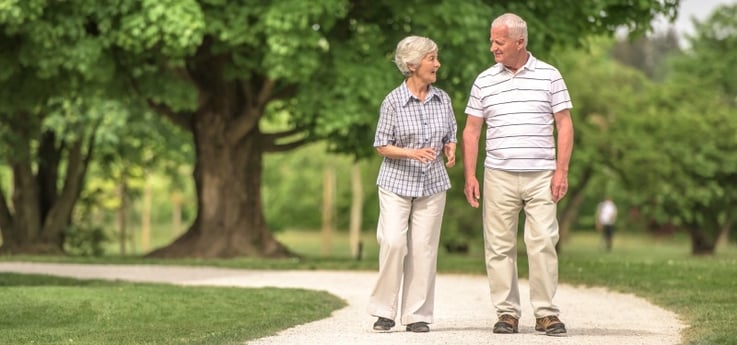
Here's some exciting news in our pursuit to identify the root cause of falls! A recent article published in Managed Health Care Connect identifies that people whose brains work the hardest when they try to walk and talk at the same time may have a higher risk of falling in the future than seniors who can do both of these with ease! To our knowledge, this is the first study to link brain activity changes that PRECEDE behavioral changes to risk of falls, per researcher Dr. Verghese.
People who can easily multitask—including walking and talking at the same time—tend to fall less frequently than people who struggle with multitasking. More than one in four seniors fall each year, and falls are a leading cause of death and disability in seniors. More research is needed to identify interventions that could influence brain activity during complex walking conditions as a way to prevent falls, but this is a great start!
Using the Findings to Help Prevent Falls
If you're concerned about a resident’s risk for falls, consider initiating the standards for fall risk identification and reduction efforts. These include balance and strength training, medication reviews, checking for appropriate footwear, etc. But also think outside of the box!
The terms homelike environment, clutter-free environment, and therapeutic milieu may sound like canned interventions on a care plan—and unfortunately they often are. But if this study is accurate, consider the implications for a resident at risk for falls who is ambulating in a common area full of distracting noises or clutter. Whether they try to pay attention to conversations, respond to their name being called, or step around items on the floor, they're multitasking. And if the resident has difficulty processing multiple stimuli while walking, these situations could increase the risk of falls.
Being alert to these situations and maintain a calm, therapeutic environment with a decreased risk for falls. Be the customer: quietly visit resident care areas, common areas, and activity rooms. Bring your critical eyes, be hypersensitive to noise levels, clutter, etc. Then observe the residents as they ambulate about your center. Are they stressed? Do they hesitate, turn their heads to noise, try to respond to external stimuli? If so, it may be time to evaluate whether these residents would benefit from decreased stimulation. You could flag them with color-coded arm bands on the walker to signal staff to be considerate of the resident’s need for a calm environment.
Although there's no magic formula and our seniors may continue to fall, the goal is to identify the specific causes of falls that are very individual to each resident.
Be Aware of the Hidden Impacts
Thinking about this study makes me pause, as many of the centers I visit are abuzz with activity, happy noises, and alarms. The hidden impact of these seemingly harmless, "normal" noises on residents at risk could be significant.
Take the time to be the observer in your center. Stop, look, and listen. It could make the difference in your fall rates and resident outcomes!
Want more insight into resident fall rates? Discover how QA Reader can help you track, trend and identify root causes of falls!

